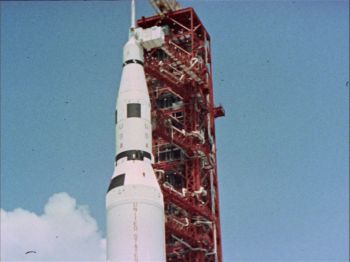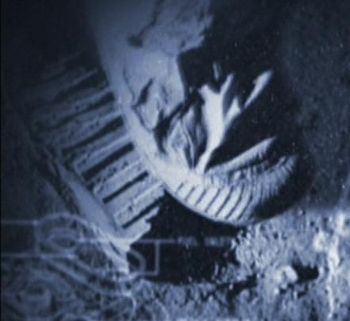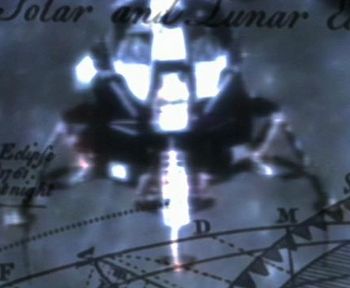Apollo program

The Talosians viewed several images about Earth's Moon and programs to study and explore it while accessing the U.S.S. Enterprise NCC-1701's computer in 2254.[2]
Apollo 8
In an historic first, the 3-man crew of Apollo 8 journeyed around the moon in 1968, observing and photographing the natural satellite and viewing "Earthrise."[3]
Apollo 11

On 20 July 1969, the age-old dream of landing a man on the moon was accomplished by Apollo 11, whose Lunar Module landed in the Sea of Tranquility. Astronauts Neil Armstrong and "Buzz" Aldrin remained on the surface for 21 hours 36 minutes.[3][5]
Apollo 13
Disaster was averted in 1970 as Apollo 13, which experienced a power failure en route to the moon, was skillfully swung around the satellite and brought safely back to Earth.[3]
Apollo 14
In 1971, Apollo 14 landed at Fra Mauro on the moon, the destination originally chosen for the ill-fated Apollo 13.[3]
Apollo 15
In 1971, Apollo 15 landed in Hadley Rille on the moon.[3]
Apollo 16
In 1972, Apollo 16 spent more than 71 hours on the lunar surface.[3]
Apollo 17
Apollo 17 marked the end of NASA's manned lunar missions, spending a record 75 hours on the moon and returning with 113.6kg of lunar material.[3]
Apollo 18
In 1975, Apollo 18 and Soyuz XIX linked up in space, culminating two years of cooperation between the United States and the Soviet Union.[3]
LEM

References
- ↑ "Assignment: Earth." Star Trek, Episode 55. Television. 29 March 1968.
- ↑ "The Cage." Star Trek, Episode 00. Television. 1965 (Unaired).
- ↑ 3.0 3.1 3.2 3.3 3.4 3.5 3.6 3.7 Goldstein, Stan and Goldstein, Fred with Sternbach, Rick. Star Trek: Spaceflight Chronology. Pocket Books, 1980.
- ↑ 4.0 4.1 "Broken Bow." Enterprise, Episodes 01-02. Television. 26 September 2001.
- ↑ Wheeler, Wm. John with McLimore, Guy W. Jr., Poehlein, Greg K., and Tepool, David F. "Cadet's Orientation Sourcebook." Star Trek: The Role Playing Game, Book 2004A. FASA Corporation, 1983.